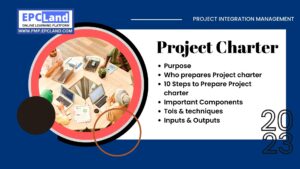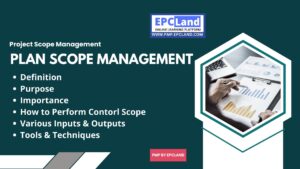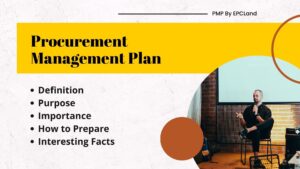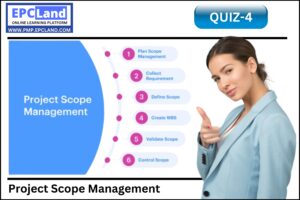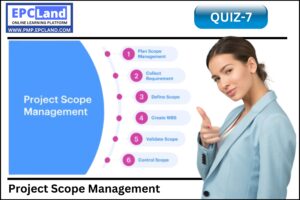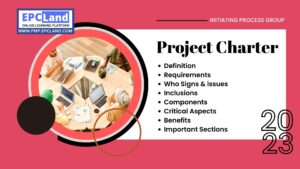Table of Contents
ToggleWhat is the purpose of the scope management plan?
The purpose of a scope management plan is to create a project structure by documenting the resources required to achieve project goals. A scope management plan also reduces the possibility of scope creep.
A scope management process helps avoid common problems such as:
- Ever changing requirements
- waste
- wasted time
- miss the deadline
Don’t Miss the 1000+ MCQ questions & hundreds of quizzes on PMP Knowledge Areas and Various important sections.
What is the scope of the project?
A project scope sets the project boundaries and defines the project goals, deadlines, and deliverables. When defining the scope of a project, structure it around what the team does and doesn’t do, presenting goals and objectives to work on.
The entire team should be involved in defining the scope of the project. This means communicating with key stakeholders and creating a project scope statement outlining the project’s requirements. For example, when defining the scope of a new advertising campaign, the design team, content team, and digital marketing team should all agree on the details of the scope statement.
What is scope creep?
Scope creep occurs when a project extends beyond its original scope statement. For example, scope creep can occur when stakeholders add additional project artifacts after the project has started.
Unexpected project changes can increase project risk, including schedule delays, budget increases, overwork, and poor quality end products. There are several reasons why scope creep can occur. Some reasons are:
- Unclear project scope
- unrealistic project goals
- too many prospects
- Poor scope management
- Lack of communication with stakeholders
Avoiding scope creep requires planning for it. This is where a strong scope management plan can help.
What are the three processes of Project Scope Management Plan
Planning
The planning process attempts to capture and define the work to be done.
Controlling
Control and monitoring processes focus on documenting project change tracking, scope creep, tracking, and rejection/approval.
Closing
In the final process, completion includes reviewing project deliverables and evaluating results against the original plan.
Step to Create a Project Scope Management Plan
The first step in the planning process is to create a scope planning document. This document should include a scope statement, a breakdown of project requirements, and the expected deliverables of the project.
A scope plan document may also include a change management process, a change request process that can prevent scope extension. This document can be referenced in later phases of project planning. This documentation may be required for complex projects, projects where stakeholders may want many outcomes, or where outcomes are in flux.
Develop Plan:
Include Expert Opinion:
All parts of the organizational process should be considered in creating a scope planning document. Consult with cross-functional and senior stakeholders to ensure you have all the information you need.
Hold a scope kickoff meeting.
Before locking a scope document, make sure you have the consent of all parties involved. Share the scope plan document asynchronously or host a kickoff meeting to allow other managers and team members involved in the project to contribute to the original scope statement.
Gather project requirements for Project Scope Management Plan
Critical steps for gathering project requirements:
Create a project charter
Create a project charter or elevator pitch to ensure that your stakeholders have a clear understanding of your project and that their expectations are aligned with your project goals.
Conduct focus groups or workshops.
Hold focus groups and workshops to help stakeholders better understand the project. Communicating your project goals to stakeholders is essential if you want them to care about the scope of your project.
Prototype development:
Prototype the project results before presenting the project to stakeholders. This allows stakeholders to visualize the final product and raise concerns early or list additional requirements.
Define scope for Project Scope Management Plan
After gathering stakeholder requirements, transform this information into a clearly defined scope and detailed product description. This document clarifies project expectations and deliverables so that all team members understand what they need to achieve.
Critical steps for defining scope:
Try Product Analysis:
Before you define your scope and write a detailed product description, you should do a thorough product analysis. Analyze the product you want to create from the customer’s or client’s perspective to determine if it meets expectations.
Generate alternatives:
We also need to generate alternatives in case the project poses a risk. For example, if you are planning to launch a new product and the launch date is delayed, how will you meet the needs of your stakeholders?
Facilitate workshops:
Hold brainstorming workshops to clarify project scope and encourage collaboration among team members.
Create a work breakdown structure for Project Scope Management Plan
A work breakdown structure (WBS) is a way of dividing a project down to task level. Creating a WBS allows the team to clearly visualize each component of the project and assess what needs to be done.
A work breakdown structure creates a hierarchy of tasks. From there, you can plan, monitor, and control your project.
Critical steps for creating HOS:
Categorize your project goals.
A WBS decomposes or decomposes project goals into dependencies and sub-dependencies. These small groups of tasks are often called work packages. Categorizing tasks gives you a clear view of everything you need for your project: time, equipment, tools, and costs.
Workflow automation:
Automating workflows for team members streamlines project coordination and increases project transparency. Using software to automate these workflows also reduces manual information gathering and duplication.
Scope validation for Project Scope Management Plan
Validating the scope means obtaining sign-off from all stakeholders involved in the project. Ensure project stakeholders have a clear understanding of project deliverables to avoid future scope expansion. Seek feedback and advice on changes and improvements where possible.
Critical steps for Verification
Check your plan:
Validation is the final release of the scope management plan and should be thoroughly reviewed and reviewed. Team members help review the plan before sending it to stakeholders, but stakeholders should also participate in the final review so that the plan gets as much attention as possible.
Control Scope for Project Scope Management Plan
The final step in the scope management plan is scope control. Monitor project status and manage scope changes as the project moves into execution. The best way to streamline scope control is with project management software. These tools can share feedback, files, and status updates about your project so you’re aware of scope changes in real time.
Critical steps for Scope control
Analyse variance:
This part of the scope management plan assesses how much variance is occurring within the scope. Gain insight into future projects by analysing your oscilloscope’s actual and planned performance. See change control documentation:
Early in the planning phase, we created a change management process. Be sure to refer to this document so you can follow the flow of information as your project changes.
Final Take Away from Project Scope Management Plan
One of the most difficult tasks when leading a project is tracking stakeholder and customer expectations. But with a clear scope and timeline in place, project managers can more easily ensure deadlines are met and time is used efficiently throughout the project lifecycle.
Scope management is necessary for long-term project management. This will allow us to estimate the time, effort and cost required to complete the project. Scope is a key element of project management. Set parameters for changing aspects of the project lifecycle
Similar Articles on Project Management Planning Process Group
Add Your Heading Text Here
Lorem ipsum dolor sit amet, consectetur adipiscing elit. Ut elit tellus, luctus nec ullamcorper mattis, pulvinar dapibus leo.
Add Your Heading Text Here
Lorem ipsum dolor sit amet, consectetur adipiscing elit. Ut elit tellus, luctus nec ullamcorper mattis, pulvinar dapibus leo.
















